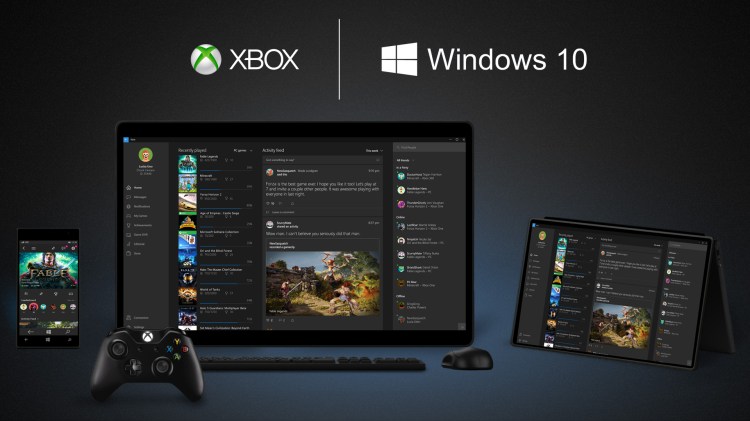The Casual Games Association paid for Jeff Grubb’s trip to Casual Connect Asia, where he presented a lecture. Our coverage remains objective.
SINGAPORE — Windows 10 is all about bringing every Microsoft product under one core operating system, and that even extends to gaming.
The PC version of Windows 10, which launches later this year, will feature a new unified app store that will enable people to get the same apps on their computer as they get on their Xbox One. The company is also planning to offer game developers the chance to make their product once and release it both on Xbox One and PC through its digital storefront. You could easily interpret this as Microsoft’s latest attempt to compete with Valve’s Steam digital-distribution PC gaming service. But Microsoft claims that isn’t the case.
“Steam’s done a great job in the PC gaming space over the last 10 years. We absolutely love Steam,” Microsoft senior product marketing manager Corey Goff said during a question-and-answer session at Casual Connect in Singapore this week. “We’re not looking to directly compete with them. But we’re looking to give developers the opportunity to sell their games on another storefront and take advantage of some of our awesome payment options, like mobile operator billing and more local options.”
Goff said that Microsoft’s Windows 10 app and game market will take Bitcoin. That’s the all-digital cryptocurrency that has grown in popularity over the last few years. Between that and carrier billing, the method where consumers charge purchases to their phone bill, Microsoft could increase its potential to generate revenues from underdeveloped markets in terms of credit-card penetration.
“Also, what’s unique about our store is that it will enable you to ship to Xbox,” Goff said. “It’s one single store, and it helps you get to all these different platforms that we offer.”
That’s PC, Xbox, and even Windows 10 smartphones. That should significantly decrease the amount of work a developer will have to do if it’s planning on releasing its game on PC and console. If it means less work, it should increase the likelihood that studios will opt to go through Microsoft’s channel.
And it seems like this developers-first strategy could work. Microsoft isn’t just trying to make publishing games across its devices and platforms simpler; it’s also getting aggressive with its outreach. The company was one of the top sponsors of Casual Connect, and it had a significant presence at the show. This put it directly in front of dozens of Southeast Asia’s fastest-grossing gamemakers.
It wasn’t an enormous conference, and Microsoft was primarily reemphasizing the points it covered in its Windows 10 event in January as well as its Build Developers Conference in April. But it definitely is acting like it has a vision that will work if it gets developer support, and everything it’s saying is to position Windows 10 as a big leap forward for people making games as well as software for PCs, smartphones, and the Xbox One.
VentureBeat's mission is to be a digital town square for technical decision-makers to gain knowledge about transformative enterprise technology and transact. Learn More

